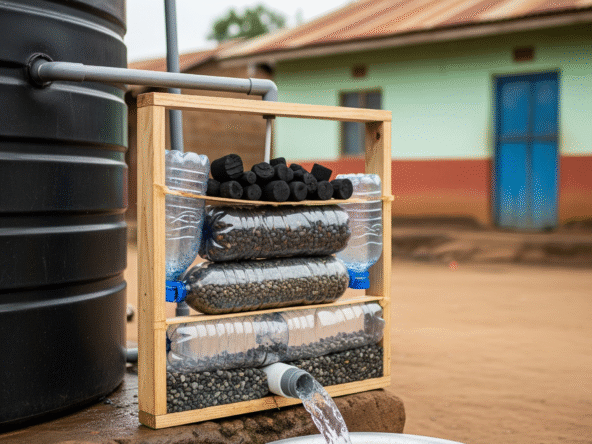Solar-powered water pumping has become a leading solution for rural and off-grid communities in Kenya. However, during overcast conditions or prolonged rainy seasons, solar output can drop significantly impacting water access for homes, farms, and rental compounds.
In this article, we explore backup pumping strategies to ensure uninterrupted water supply during cloudy days. Whether you’re filling a 5000L Kentank, irrigating crops, or topping up a multi-tank setup, these options help you stay water-secure, rain or shine.
Why Solar Pumps Slow Down on Cloudy Days
Solar pump systems depend on sunlight to generate the energy needed to lift water. In areas like Nyandarua, Limuru, or Kisii, frequent cloud cover may reduce system output by up to 80%.
Common problems include:
- Delayed tank refills
- Lower pump pressure
- Inconsistent irrigation cycles
- Total system failure on rainy days
Planning for redundancy by integrating manual, fuel, or grid backups—is essential for reliable water management.
1. Manual Backup Pumps for Emergencies
Hand-operated pumps are simple yet effective for shallow wells or small-scale use.
Pros:
- No fuel or electricity required
- Affordable and durable
- Ideal for remote homesteads or seasonal farms
Cons:
- Low volume output
- Requires physical effort
- Not ideal for deep wells or daily household use
They pair well with small tanks like 500L or 1000L models. Check this Tank Sizing Guide to ensure the storage matches your household needs.
2. Petrol or Diesel-Powered Water Pumps
Fuel-powered pumps are a solid alternative when solar fails.
Ideal for:
- Refilling 5000–10000 litre water tanks
- Boreholes or rivers on large plots
- Watering livestock or farm plots
Tip: Store your pump safely in a secure shed, just as you would with a water tank. Learn how in Tank Shelters and Lockable Enclosures
3. Hybrid Pump Systems (Solar + Grid or Generator)
A hybrid pumping system uses solar as the primary source but switches to grid power (KPLC) or a generator during cloudy periods.
Advantages:
- Continuous operation regardless of sunlight
- Automated switching with some pump controllers
- Works well with large tanks like 10,000 litre Kentank models
Protect your tank from overflowing when switching power modes by integrating a Float Switch Refill System.
4. Gravity-Fed Water Distribution Systems
Elevated water tanks offer pressure-free water delivery without electricity or fuel.
What you need:
- A properly designed tower stand
- A minimum height of 10–18 feet depending on usage
- 1–2 inch outlet pipes for higher flow rates
For full setup guidance, explore Gravity-Fed Tank Setups in Kenya
5. Smart Water Management Practices
When power is limited, conserving water helps extend tank reserves.
Practical tips:
- Limit irrigation to essential crops or early morning hours
- Use low-flow showerheads and faucets
- Delay laundry and tank cleaning until sunnier days
Explore plumbing tips in Water-Saving Fixtures for Budget Homes
6. Emergency Water Deliveries and Temporary Storage
When all else fails, many rural and peri-urban households turn to water delivery trucks.
How to prepare:
- Keep a spare IBC tank or 1000L plastic tank for backup supply
- Install taps with lockable valves
- Place tanks in shaded, elevated areas to reduce algae and heat loss
Learn about proper tank usage in IBC Tank Use in Kenyan Homes
Cloudy days don’t have to mean dry taps. With the right backup pump plan from fuel-powered solutions to gravity-fed setups, float switches, and emergency tanks—you can ensure year-round water reliability even in Kenya’s most weather-challenged regions.


